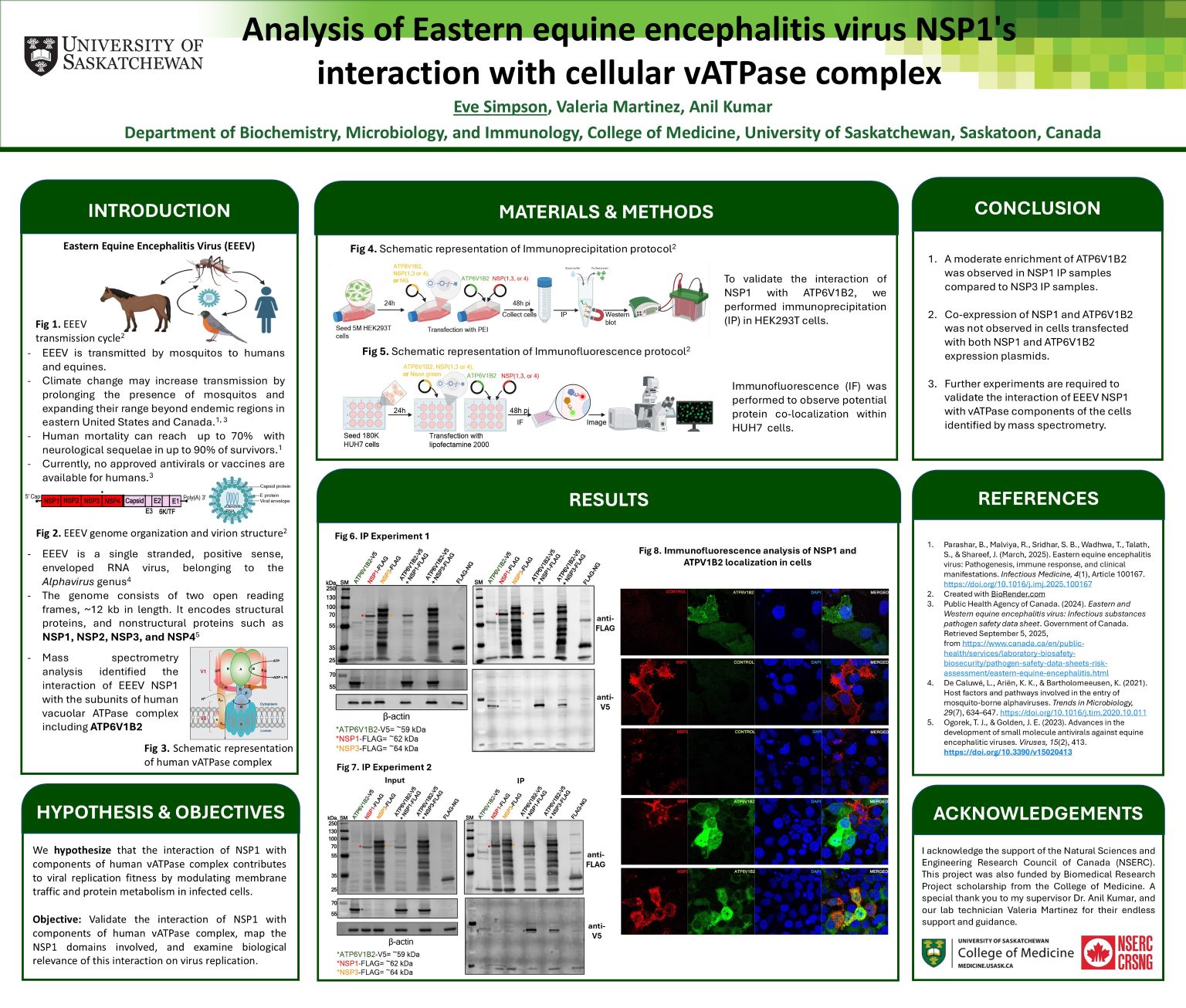
Analysis of Eastern equine encephalitis virus NSP1 protein’s interaction with cellular vATPase complex
Eve Simpson
Eastern equine encephalitis virus (EEEV) is a mosquito-transmitted human pathogen endemic to eastern Canada and the U.S. The virus causes fatal encephalitis in humans. Currently, there are no approved antivirals or vaccines for humans. The Kumar lab had previously mapped the host protein interactome of all EEEV-encoded proteins using affinity purification and mass spectrometry. Components of the host Vacuolar ATPases (vATPases) machinery were identified as an interaction partner of NSP1 protein of EEEV. NSP1 is essential for viral protein translation and viral RNA capping. vATPases play roles in vesicle acidification, membrane trafficking, and protein processing. We hypothesize that NSP1 interacts with vATPases and modulate its function to enhance viral replication during infection. To validate this interaction, we transfected HEK293T cells with tagged versions of both proteins and performed co-immunoprecipitation and western blot assays. To visualize the localization of both proteins in cells, we performed immunofluorescence assay. Our experiments showed a moderate enrichment of ATP6V1B2 in NSP1 immunoprecipitation samples compared to a control viral protein. Co-localization could not be visualized as no co-expression of NSP1 and ATP6V1B2 was detected in co-transfected cells. Further experiments are needed to confirm the interaction of NSP1 with vATPase and identify its role in virus replication.
